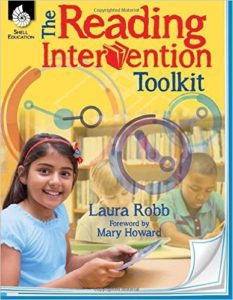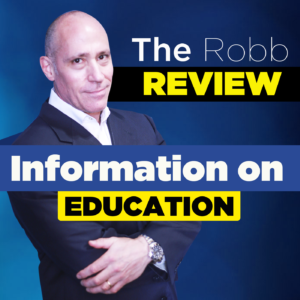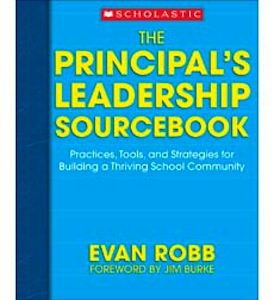Colleagues, Co-Conspirators, and Creative Partners
By Steven Kellogg
In a celebrated poem by Robert Frost called “A Tuft of Flowers,” a worker mentally sends a message to a colleague who has labored earlier that day on the same task with which the narrator is concerned, and he says: “Men work together, I told him from the heart, whether they work together or apart.” And that’s the way we work, as librarians and teachers of reading on one hand, and authors and illustrators on the other. We are colleagues and co-conspirators who put our energies separately, but together, into the very important and exciting work of turning kids on to books, giving them a passion for their written and spoken language, and opening them up to its vast communicative and artistic range.
As creative partners, we depend upon each other to do our work with care and sensitivity. You rightfully expect authors and illustrators to put into your hands’ books whose words and images can be effective tools for reaching, inspiring, and moving the children in your care. Happily, that expectation is being validated by a surge of interest in literature-based reading programs throughout the country. It seems to be fueled by the growing conviction that children don’t become particularly excited about basal readers, workbooks, ditto sheets, nor do they file into libraries to check them out. They do become excited about stories and pictures that capture their imaginations. Like all of us, they are drawn to works that communicate in the language of feeling, which is the way that elusive thing called art so effectively reaches us. And the communicative power of art, as it is utilized in its varied means of creative expression (from architecture to painting to literature to drama), has been a compelling outlet for every culture and civilization since man’s beginnings.
An increased emphasis on the role of children’s literature is a challenge to librarians and teachers as well as to their partners in publishing. Your role in our collaboration is to share the books with care, enthusiasm, creativity, and love so they have the maximum opportunity to reach their audience as effectively as possible. Although authors, illustrators, editors, art directors, designers, and printers all work together to produce a book, it’s not until the book is actually read and looked at that it really comes to life. Until that moment, it’s a darkened theater—a tableau frozen on a stage in a vacant auditorium. But when the teacher, librarian, parent, or friend opens the cover and shares the book with a child, the theater is illuminated, and, as the pages turn, the curtain rises and falls on successive acts and scenes. Through that reading and sharing the words come to life, and the illustrations move and flow with action, feeling, and vitality.
Of course, each book must stand on its own merits and earn applause and approval from whoever experiences it. But if you bring a child and a book together with a sensitive understanding of that particular book—if you recommend and share and read the book aloud as if you were a part of its creative life—then that book has a much greater chance of being special to that child. And you will be remembered as being part of that book, and part of that gift, as surely as if your name were engraved on the jacket and the title page: a colleague, a co-conspirator, a creative partner.
I have loved picture books since my childhood, and I recall with deep gratitude the relatives who were sensitive enough to give me books as gifts and to share both the books and themselves in magical read-aloud sessions. I had a passion for drawing as a child, and I used to make up my own tales and illustrate them for my two younger sisters, Patti and Martha, in a ritual we called “telling stories on paper.” On a rainy Saturday afternoon, or just before bed, I would sit between them with a stack of paper on my lap and a pencil in my hand, and I’d spin some kind of a bizarre yarn while scribbling illustrations to accompany the narrative, passing them first to one of the girls and then to the other. I found the process of “telling stories on paper” enormously compelling, and during those early days, before the blessings of editorial intercession were available to me, I would rattle onward with interminable enthusiasm until my dutifully attentive sisters were each buried under piles of pictures or comatose with boredom.
My childhood fascination with illustrated storytelling persisted into young adulthood and shortly after graduating from college I began sending manuscripts with accompanying sketches to major publishing houses. When I was offered a contract to illustrate George Mendoza’s stories “The Hunter,” “The Snake,” and “The Hairy Toe” in a forty-eight-page book entitled GWOT! Horribly Funny Hairticklers, I was ecstatic.
I had a wonderful time putting the book together, and I sent copies off to various friends, particularly those who had encouraged me to make the leap into publishing. Among these was a couple who lived in New York with their precocious but rather shy four-year-old-daughter named Helen. They were concerned that exposure to stories like “The Hunter,” “The Snake,” and “The Hairy Toe” that were assembled in a book entitles GWOT! might prove to be a traumatizing experience for her. But because I had illustrated the book and inscribed it to their Helen, they dutifully read it to her at bedtime. Several nights later, my wife and I were invited to their apartment for dinner, and in response to my knock the door swung open and there stood Helen in a ruffled party dress. For a moment she remained poised with a sweet hostess smile on her face. Suddenly, it transformed itself into a jubilant mischievous leer, and she screeched “GWOT! I Love You!” It was obvious that the book had not traumatized her in the least, and indeed her parents, to their ultimate despair had to reread the stories night after dreary night for many, many months.
Helen and her family moved to the West Coast, but I continued to send her my books as they were published. A few years ago, the second oldest of my stepdaughters was married and Helen, now a young woman and an established television actress, flew east with her parents to attend the wedding. I had not seen her in quite a few years, and, as the deception in our backyard was nearing its end, Helen and I strolled along the edge of the woods together, and she brought me up-to-date on all that had been happening in her life. And of my books, which are still on her bedside shelf. She told me that whenever she opens them, the words and the pictures are a magic carpet to her childhood. She feels that she is once again a little girl snuggled against her parents as they read the stories aloud, and she happily loses herself in the illustrations that were once spread across their laps.
In reflecting on Helen’s involvement with her books, I realize I had known something intuitively when beginning my career that I am convinced, thirty years later, is indeed true. Too often, I think, we define children as a bland herd, and we do not adequately recognize the complicated variety of personalities that they, as a group, represent.
There should be made available to kids, as well as to adults, a delicious smorgasbord selection of books that deal with many facets of human experience. We should provide books that present an opportunity to explore a great range of emotions, exposing children to stories and images that inspire laughter, tears, shivery-spooky feelings, flashes of glowing, loving warmth, and insight. They should be acquainted with books that contain the creative approaches of many different authors and illustrators so that each young reader can find the ones that speak to him or her with particular clarity and poignance.
Helen’s recollection of the way in which her parents shared books with her is also revealing. I believe that the picture book’s finest hour occurs during a read-aloud session when the book is bridging two laps and uniting the reader and the audience. The reading adult’s voice unlocks the magic of the story, inviting the child to enter the lives of the characters and to explore the landscapes that are delineated in the illustrations. There is a special warm and personal quality to the participation in that shared experience that is not duplicated while seated in front of a television set in a darkened room, and it is important for all of us who love children and books to continually express the value of reading aloud.
Check out Steven Kellogg’s website
Don’t Miss These All-time Favorites by Steven Kellogg:
The Island of the Skog
Paul Bunyon
Best Friends
The Mysterious Tadpole
Pinkerton Behave!
Jack and the Beanstalk
![]()















